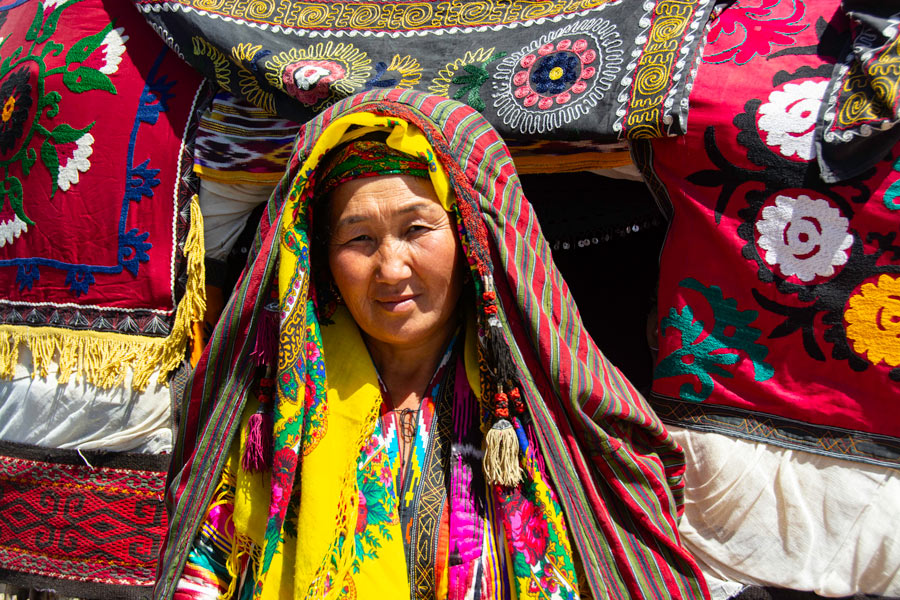
Unique natural landscapes, ancient Silk Road cities, and Uzbekistan’s rich culture have gained worldwide recognition. Even if you’ve never been, you’ve likely heard of Samarkand with its graceful oriental architecture, the national dish pilaf, or the vivid satin and adras fabrics featured in collections by Giorgio Armani and Oscar de la Renta.
UNESCO highlights many of Uzbekistan’s landmarks, traditions, and crafts as part of its mission to safeguard cultural and natural heritage across the globe.
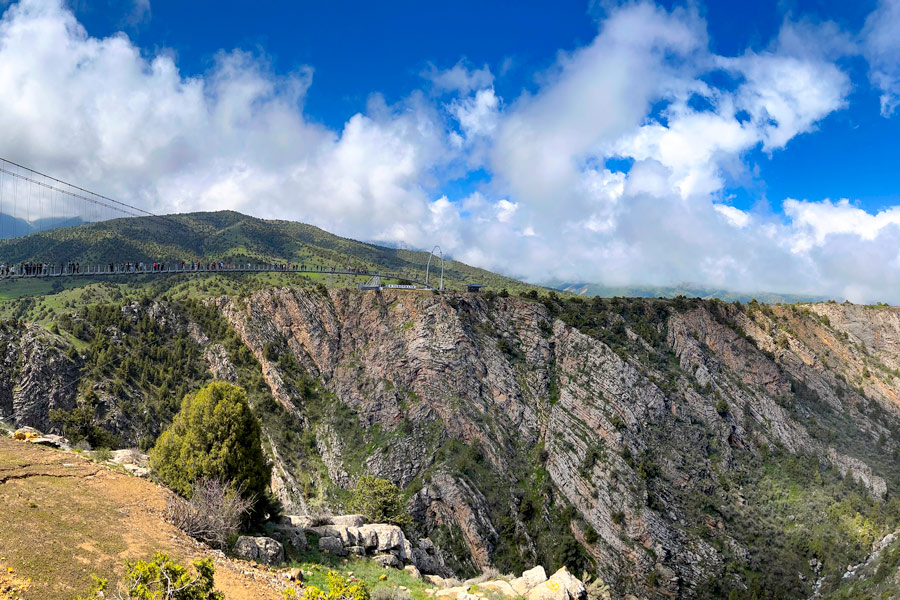
Seven Uzbek sites appear on the UNESCO World Heritage List: the historic centers of Samarkand, Bukhara, Khiva, and Shakhrisabz, along with three remarkable natural areas – the Western Tien Shan, the Turan Deserts, and the Zarafshan-Karakum Corridor of the Silk Road.
But Uzbekistan’s heritage is not only preserved in stone. It lives in music, words, rituals, and craft. This living cultural expression is reflected in the Representative List of the Intangible Cultural Heritage of Humanity, which includes sixteen elements from Uzbekistan – from traditional performing arts to craftsmanship and oral traditions passed down through generations.
The UNESCO Tentative List features other outstanding places such as the ancient petroglyphs of Sarmishsay, the traditional mahallas of Tashkent with their Soviet modernist architecture, the scenic Zaamin Mountains, and the ruins of Kanka, once the capital of the Kangui state.
Cultural Space of Boysun District
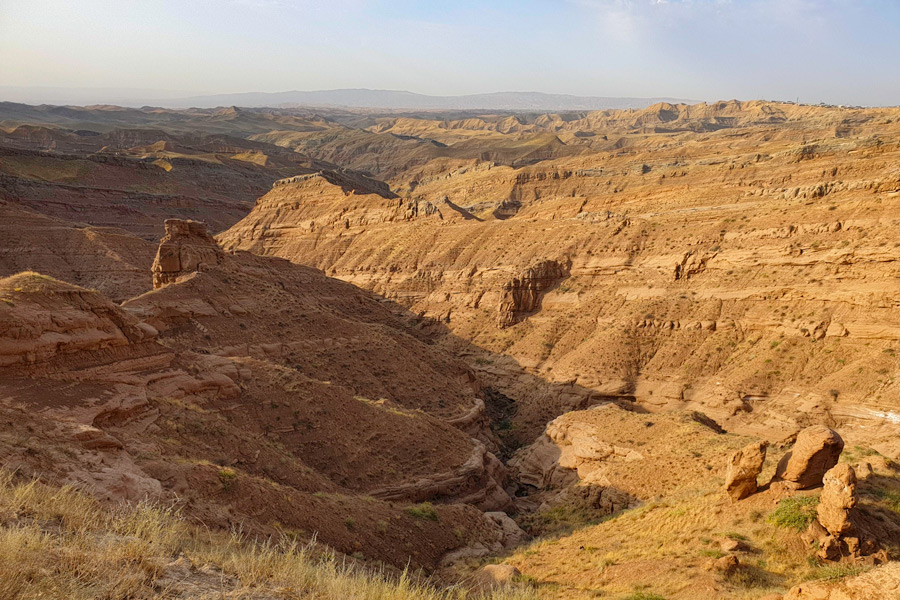
The cultural space of Baysun (Boysun) was inscribed on the UNESCO Representative List of the Intangible Cultural Heritage of Humanity in 2008, following its earlier recognition in 2001 as a Masterpiece of the Oral and Intangible Heritage of Humanity.
Located in Uzbekistan’s Surkhandarya Region, Baysun is an ancient crossroads once traversed by caravans on the Silk Road to India. This district is known not only for its rich intangible heritage, but also for exceptional archaeological sites, including the Teshik-Tash Cave, fortresses dating back to the era of Alexander the Great, and the dramatic Derbent Canyon.
Shashmaqom Music
Shashmaqom was recognized by UNESCO as a Masterpiece of the Intangible Cultural Heritage of Humanity in 2003 and was inscribed on the Representative List in 2008. This tradition is jointly represented by Uzbekistan and Tajikistan, reflecting its shared historical roots in both countries.
A refined genre that unites poetry, vocal performance, and instrumental music, Shashmaqom is considered the pinnacle of Uzbek classical music. Its name, meaning “six makoms,” refers to its six-part structure composed of musical poems. Characterized by rich melodies and rhythmic variety, the genre reached its classical form in 18th-century Bukhara, though its origins trace back to pre-Islamic times.
Navruz
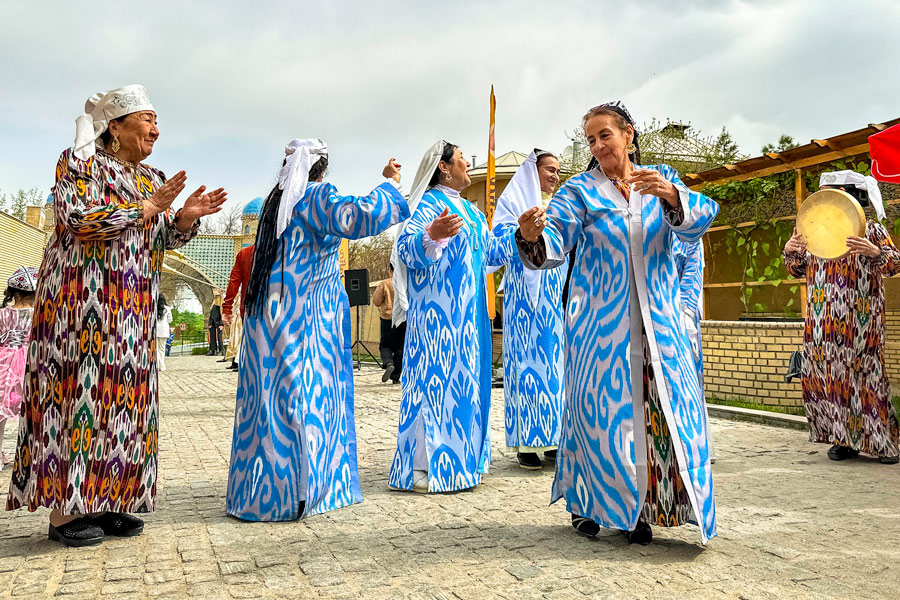
Navruz is an ancient Zoroastrian festival and a cherished part of Uzbekistan’s cultural heritage. It was inscribed on UNESCO’s Representative List of the Intangible Cultural Heritage of Humanity in 2009. In 2016 and again in 2024, additional countries joined the nomination, and today Navruz is recognized by 13 nations, including Uzbekistan, other Central Asian republics, India, Pakistan, Afghanistan, Turkey, Iran, Iraq, Azerbaijan, and Mongolia.
Celebrated on March 21, Navruz marks the arrival of spring and is often likened to the New Year. Families prepare festive meals, exchange gifts, and share food with neighbors and loved ones. Cities across Uzbekistan host public celebrations featuring traditional games, open-air fairs, and cultural performances. A central part of the holiday is sumalak – a sweet dish made from sprouted wheat, prepared and shared as a symbol of renewal and abundance.
Katta Ashula
Katta Ashula, meaning “big song,” is a traditional musical genre rooted in the Fergana Valley and was inscribed on UNESCO’s Representative List in 2009. It blends Eastern poetic texts with vocal performance and instrumental accompaniment, forming a distinctive style unique to the region.
A notable feature of Katta Ashula is the use of a small tray or porcelain plate held by the performer. This simple acoustic tool helps project the sound toward the audience and enables the singer to better hear their own voice, enhancing the clarity and resonance of the performance.
Askiya
Askiya, the art of witty verbal exchange, was added to UNESCO’s Representative List in 2014. This distinctive form of Uzbek folk entertainment involves participants exchanging improvised remarks on a set topic – always sharp and clever, but never offensive.
Originating in the Fergana region as early as the 15th century, Askiya demands quick thinking, verbal agility, and a deep command of the Uzbek language. Practitioners, known as askiaychi, must skillfully balance humor and respect, showcasing both cultural insight and linguistic artistry.
Culture and Traditions of Pilaf Cooking
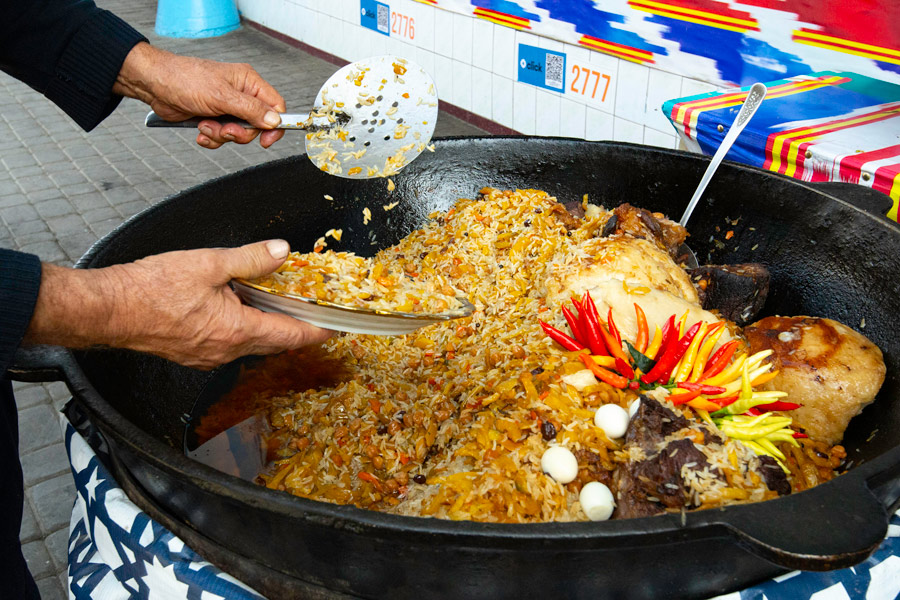
The culture and traditions of pilaf cooking were inscribed on UNESCO’s Representative List in 2016, recognizing this beloved dish as a vital part of Uzbekistan’s intangible heritage. Pilaf is an essential feature of any celebration – served at weddings, memorials, family gatherings, and national holidays. On religious occasions, it is also customary to offer it to those in need.
In Uzbekistan, pilaf is often prepared in massive cauldrons, with ingredients measured by the kilogram. Though the recipe may appear simple – just rice, meat, vegetables, and spices – the dish requires precise technique, deep knowledge of local tradition, and a practiced hand to achieve its full richness of flavor.
Margilan Crafts Development Centre and the Preservation of Atlas and Adras
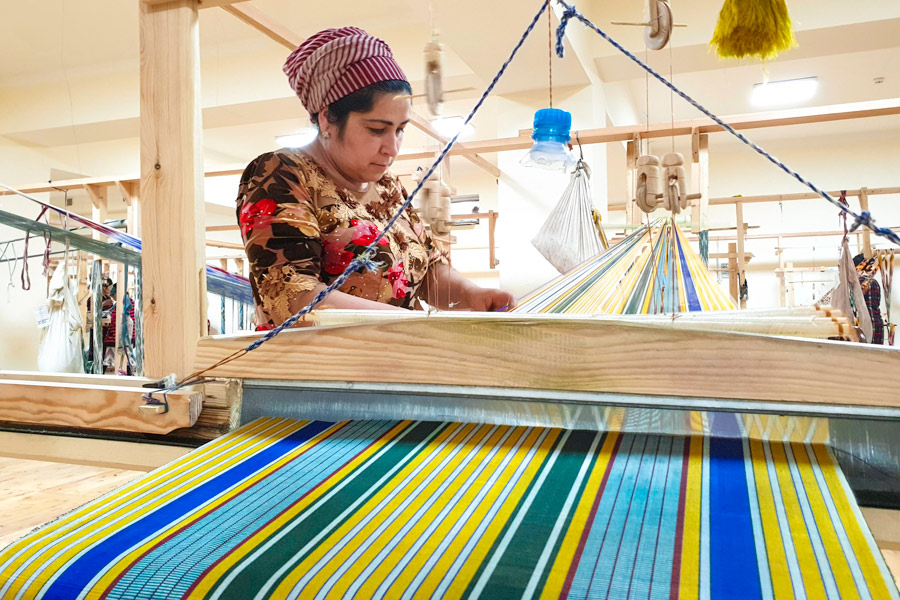
The traditional practice of producing atlas and adras fabrics at the Margilan Center for the Development of Crafts was added to UNESCO’s Representative List in 2017.
Margilan, in Uzbekistan’s Fergana Region, has been a center of silk weaving for centuries. However, in the last hundred years, the art of handcrafting these vibrant textiles has seen a decline. To counter this, the Margilan Center was established in 2007 with the aim of preserving and revitalizing the techniques of weaving atlas and adras – distinctive Uzbek fabrics known for their vivid colors and intricate patterns. Today, the center plays a vital role in safeguarding this cultural heritage and training a new generation of artisans.
Khorezm Dance Lazgi
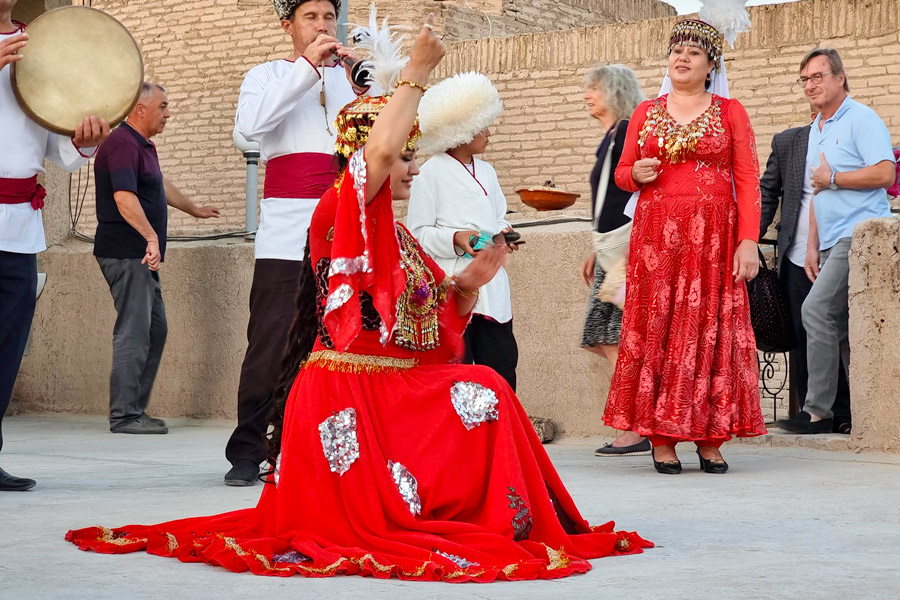
Lazgi, a vibrant and expressive dance from Khorezm, is one of the most celebrated traditional dances in Uzbekistan. It was inscribed on UNESCO’s Representative List of the Intangible Cultural Heritage of Humanity in 2019.
Archaeological discoveries at Toprak-Kala, an ancient settlement that existed from the 1st to 6th centuries in present-day Karakalpakstan, include depictions of dancers in poses resembling Lazgi – evidence of the dance’s deep historical roots. Lazgi may be performed solo or in groups, by both men and women, whose energetic and rhythmic movements often inspire the audience to join in the celebration.
The Art of Miniature Painting
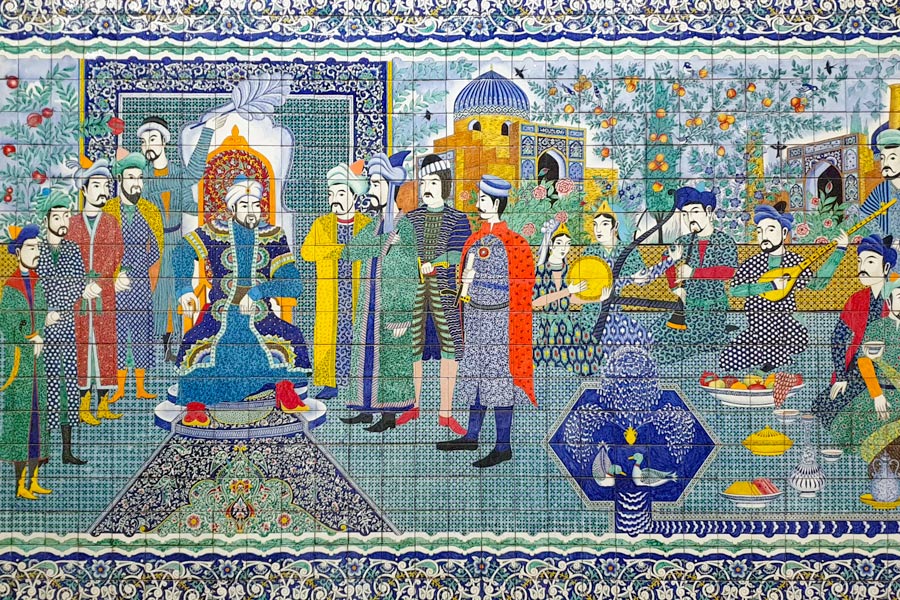
The art of miniature painting was inscribed on UNESCO’s Representative List in 2020, in a joint nomination by Uzbekistan, Turkey, Iran, and Azerbaijan.
Miniature painting holds a special place in Uzbekistan’s intangible cultural heritage. These finely detailed works traditionally illustrated literary epics, historical chronicles, and everyday life, often framed by intricate ornamental motifs. While miniatures once adorned manuscripts, they are now also featured on textiles, ceramics, papier-mâché, walls, and carpets, reflecting both the continuity and evolution of this refined artistic tradition.
The Art of Bakhshi
The art of bakhshi, an essential part of the cultural heritage of both Uzbek and Karakalpak communities, was inscribed on UNESCO’s Representative List in 2021.
Bakhshi are epic storytellers who perform dastans – oral narratives that blend lyrical text with musical accompaniment. These stories draw from folklore, heroic epics, and fairy tales, often reflecting deep cultural values and historical memory. Traditionally passed down from master to apprentice, the bakhshi tradition continues today through both oral transmission and formal instruction in specialized schools.
Sericulture and Traditional Production of Silk for Weaving
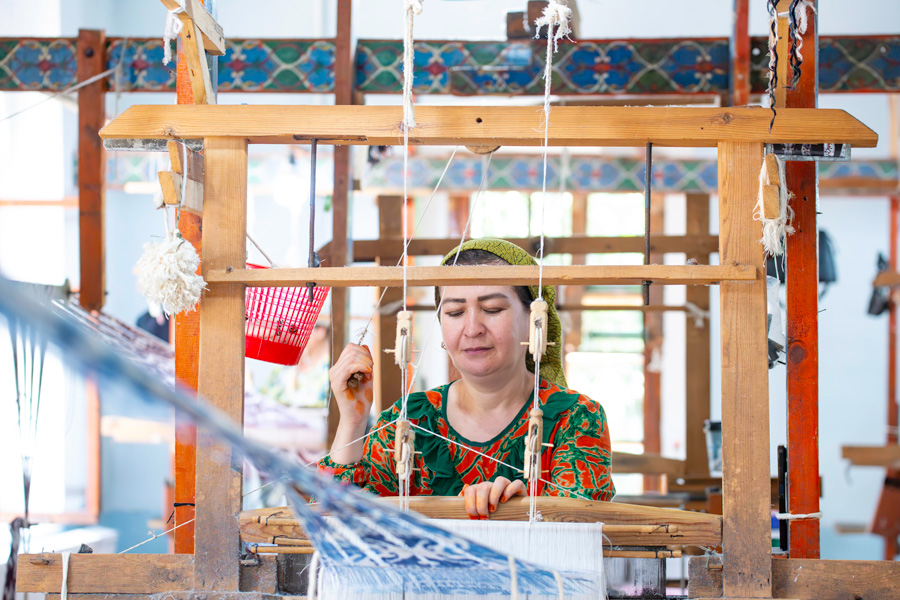
This joint nomination by Uzbekistan, Afghanistan, Azerbaijan, Iran, Turkey, Tajikistan, and Turkmenistan was inscribed on the UNESCO list in 2022.
Silk has been cultivated in Central Asia since the 5th–6th centuries, though some historians point to even earlier evidence. In Uzbekistan, the entire process takes place locally - from growing mulberry trees to dyeing threads and producing fabrics, carpets, and curtains.
Traditional Stories and Anecdotes about Khoja Nasreddin
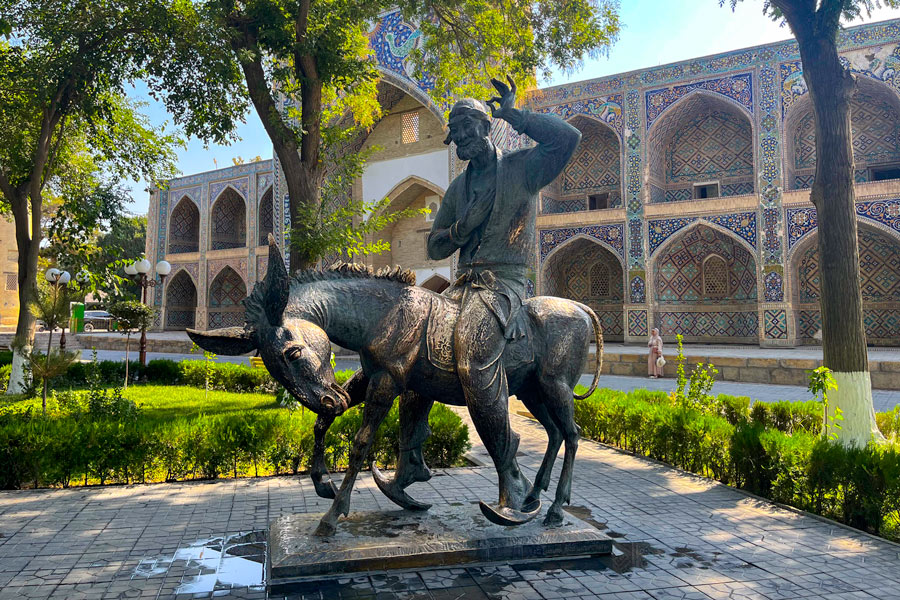
Traditional stories and anecdotes about Khoja Nasreddin were added to UNESCO’s Representative List in 2022. This nomination was submitted by seven countries, including Uzbekistan, other Central Asian republics, Turkey, and Azerbaijan.
Khoja Nasreddin is a beloved figure of shared folklore – an everyman character who appears in humorous and insightful tales. Known for his wit, cleverness, and subtle cunning, he always finds a way to overcome challenges with humor and wisdom. In Uzbekistan, his stories are widely known and cherished by both children and adults.
The Art of Illumination: Tazhib
The art of tazhib illumination was added to UNESCO’s Representative List in 2023, in a joint nomination by Uzbekistan, Tajikistan, Turkey, Iran, and Azerbaijan.
Tazhib is a refined decorative art that involves embellishing calligraphic texts and patterns with gold leaf or gold-based paint. Traditionally used to adorn religious manuscripts, this technique has been practiced for centuries. Today, tazhib continues to enhance the pages of sacred and historical books, as well as miniature paintings, preserving its legacy as a symbol of artistic devotion and craftsmanship.
Iftar and Its Socio-Cultural Traditions
Iftar and its socio-cultural traditions were inscribed on UNESCO’s Representative List in 2023, in a joint nomination by Uzbekistan, Turkey, Iran, and Azerbaijan.
Observed during the holy month of Ramadan, iftar is the evening meal that breaks the daily fast, when eating is permitted only between sunset and dawn. In Uzbekistan, it is customary to invite guests or prepare meals for those in need, creating a shared space for reflection, generosity, and dialogue. These gatherings reinforce social connections, strengthen family bonds, and foster intergenerational unity through a deeply rooted cultural practice.
The Art of Ceramics in Uzbekistan
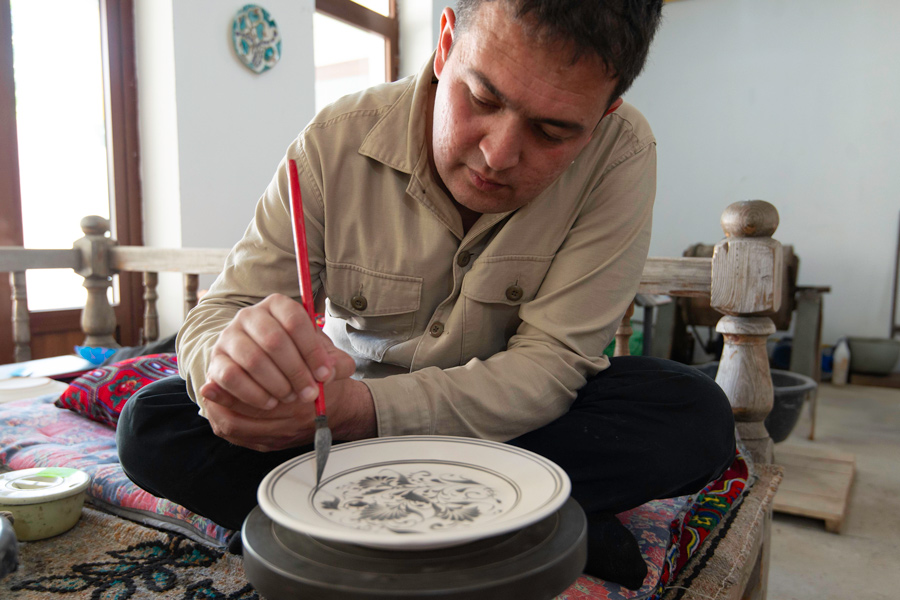
The art of ceramics in Uzbekistan, a hallmark of national craftsmanship, was added to UNESCO’s Representative List in 2023.
Pottery has been practiced across the country for centuries, a fact confirmed by numerous archaeological discoveries in various regions. Over time, distinct schools of ceramics have developed, each preserving techniques and styles passed down through generations of artisans. Today, Uzbek ceramics are admired worldwide – most notably those from Rishtan, whose vibrant glazes and intricate patterns are highly sought after by collectors and connoisseurs alike.
The Art of Making and Playing the Rubab
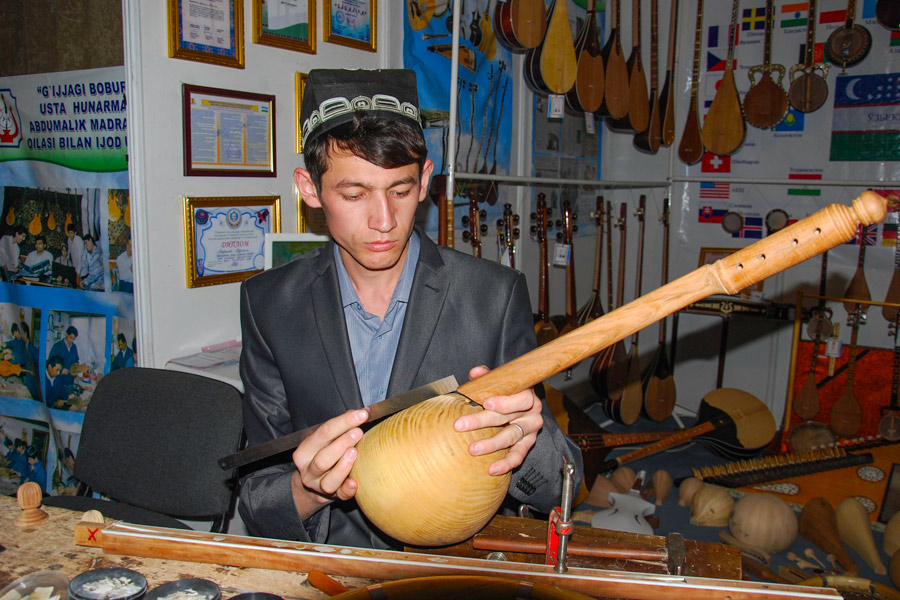
The art of making and playing the rubab was inscribed on UNESCO’s Representative List in December 2024, in a joint nomination by Uzbekistan, Tajikistan, Afghanistan, and Iran.
The rubab is one of Uzbekistan’s oldest stringed instruments, traditionally performed at festivals, ceremonies, and, more recently, as part of national orchestras. Several regional variants exist, the most prominent being the Afghan and Kashgar rubab. In Uzbekistan, both the crafting and performance of this instrument are considered vital components of the country’s intangible cultural heritage. Beyond its national significance, the rubab also serves as a cultural bridge across Central and South Asia, linking shared musical traditions in neighboring countries.

